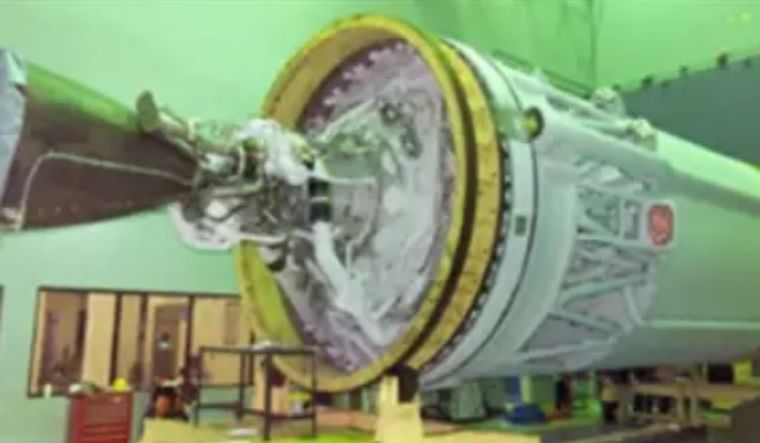The cryogenic upper stage of the LVM3 M4 launch vehicle had completed an uncontrolled re-entry into the earth’s atmosphere last week. This stage (NORAD id 57321) was part of the vehicle that successfully put the Chandrayaan-3 spacecraft into its planned orbit. It re-entered the earth’s atmosphere uncontrolled.
The object’s re-entry occurred 124 days after the launch, aligning with the ‘25-year rule’ established by the Inter-Agency Space Debris Coordination Committee (IADC). This rule recommends that objects in low-earth orbit should re-enter or be removed within 25 years to mitigate space debris accumulation. The 124-day timeframe suggests adherence to this guideline for responsible space practices.
As per space experts, re-entry is the task of bringing a spacecraft back to earth’s surface from its orbit or beyond. It is a difficult and dangerous procedure as it involves fast speeds, very high temperatures and the resistance of the earth’s atmosphere.
“Depending upon the spacecraft’s type and mission, re-entry can be either controlled or uncontrolled and can lead to either a successful landing or destruction. Controlled reentry refers to the intentional and planned process of guiding a spacecraft back to earth’s surface, typically with the objective of a safe landing. Uncontrolled re-entry, on the other hand, refers to a situation where a spacecraft re-enters earth’s atmosphere without any human intervention or control, which can result in its destruction. In simpler terms, 'uncontrolled re-entry' means that the descent into earth’s atmosphere is not guided or managed, posing challenges in predicting exactly where it will land,” space expert Girish Linganna told THE WEEK.
Unmanned rockets are vehicles used to transport such important items as satellites, probes, or experiments into space. They are typically created to be disposable, which means they are not meant to be reused or recovered after being launched. Some rockets have multiple stages that detach and return to the earth during ascent, while others have only one stage that reaches orbit and then returns to earth. In both scenarios, the rocket, or its components return to the atmosphere at very high speeds, usually faster than 7 km per second.
“The primary concern for unmanned rockets is to prevent any harm to individuals or property on the ground. To address this, they are typically directed to re-enter over such remote regions as oceans, or deserts where the risk of impact is minimal. However, complete safety cannot be guaranteed, as certain fragments may endure the extreme heat and pressure of re-entry and ultimately reach earth’s surface," he added.
"For instance, in 1997, a woman in Oklahoma experienced a minor injury when debris from a Delta-II rocket struck her. It is crucial to note that measures are taken to ‘passivate’, or eliminate, any remaining propellant in order to mitigate the danger during re-entry. After Chandrayaan-3 launch, the rocket’s upper stage underwent ‘passivation’ to eliminate any fuel or energy sources that was left behind. ‘Passivation’ simply means deactivating the rocket stage to avoid any accidents or contingencies, in line with safe space practices,” explained Linganna.
Experts point out that there are several methods to ‘passivate’ a cryogenic rocket stage such as when remaining propellants are purged from the rocket’s engines and tanks, ensuring that there is no residual fuel and when the rocket’s batteries and power systems are discharged and disconnected, removing any remaining energy sources.
Besides this all valves, lines and connectors are closed, or sealed, to prevent any accidental fuelling or ignition. The rocket stage is then carefully monitored to ensure that it remains inert and safe. This rigorous method ensures that the rocket poses no threat to any satellites, future space missions, or to the earth, in general, in line with sustainable space practices.
“The ‘command control’ systems are responsible for carrying out these activities through remote handling of the different processes and systems involved in passivating the cryogenic rocket stage. Scientists operate ground-based control systems to send remote commands to the rocket and its onboard systems to purge it of propellants, discharge power systems and close all valves and connectors to activate the passivation process,” remarked Linganna.
However, on the other hand, manned spacecraft that carry humans into space are designed to be reusable, meaning that they can be launched, landed, and launched again multiple times. They include capsules, such as the Apollo or Soyuz, and space planes, such as the Space Shuttle or the X-37. Manned spacecraft re-enter the atmosphere at lower velocities than unmanned rockets, usually 5 to 8 km/s.
Linganna points out that one of the major challenge faced by manned spacecraft is managing the intense heat generated during re-entry.
“This heat is produced due to the high speeds at which the spacecraft travels through the earth’s atmosphere, causing friction between the vehicle and the air molecules. As a result, temperatures can reach thousands of degrees Celsius.To protect the crew and ensure their safety, various methods of thermal protection are utilized—including ablative shields, tiles, or blankets, which absorb or reflect the heat. These measures are crucial to prevent the extreme temperatures from compromising the integrity of the spacecraft and endangering the crew. Precise control of the spacecraft’s attitude and trajectory using such aerodynamic control features as fins, flaps, or thrusters is also necessary to achieve a designated landing site,” said Linganna.



